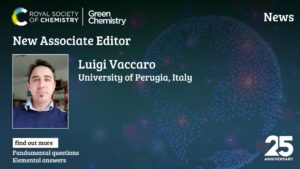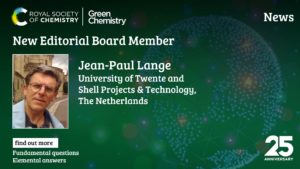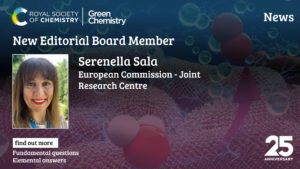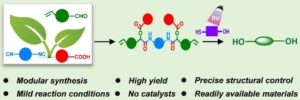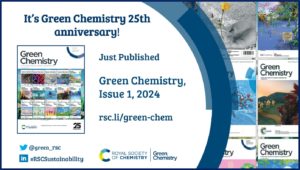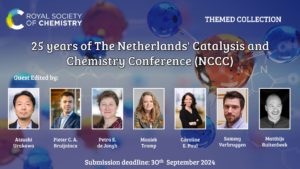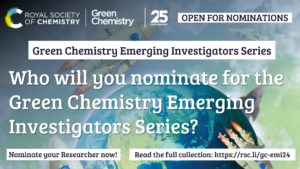We are delighted to announce that Luigi Vaccaro (University of Perugia, Italy) has been appointed as a new Associate Editor in Green Chemistry
Luigi is a Full Professor at the University of Perugia, where he leads the Green S.O.C. group, http://greensoc.chm.unipg.it. He is a Fellow of the Royal Society of Chemistry (FRSC), and before joining Green Chemistry, he was an Associate Editor for RSC Advances (2015-2024). His recognitions include the Europa Medal from the Society of Chemical Industry – London (2001), the ADP Award from Merck’s Chemistry Council for “Creative work in organic chemistry” (2006 and 2007), the G. Ciamician Medal of the Società Chimica Italiana (2007), the Lady Davis (2018) Visiting Professorship, the Pino Medal from the Organic and Industrial Divisions of the Italian Chemical Society (2023). His research is aimed at developing different aspects of chemistry to define sustainable and optimized chemical processes, combining the use of safer organic solvents, heterogeneous catalysis, and continuous-flow technology.![]() “I am honoured for this new role as an Associate Editor of Green Chemistry. Catalysis, circularity, waste-minimisation, and innovative technologies are just a few shades of the complex greater picture that green chemistry represents. I am sure that research contributions in these areas that quantitatively prove advances in terms of sustainability have and will always find a home in this journal.” – Luigi Vaccaro
“I am honoured for this new role as an Associate Editor of Green Chemistry. Catalysis, circularity, waste-minimisation, and innovative technologies are just a few shades of the complex greater picture that green chemistry represents. I am sure that research contributions in these areas that quantitatively prove advances in terms of sustainability have and will always find a home in this journal.” – Luigi Vaccaro![]()
Read some of Luigi’s Open Access papers in Green Chemistry:
- Microwave assisted batch and continuous flow Suzuki–Miyaura reactions in GVL using a Pd/PiNe biowaste-derived heterogeneous catalyst
Federica Valentini, Benedetta Di Erasmo, Marta Ciani, Shaomin Chen, Yanlong Gu and Luigi Vaccaro
Green Chem., 2024,26, 4871-4879. DOI: 10.1039/D4GC00497C
- A waste-minimized approach for the synthesis of iodinated organic borazines
Dario Marchionni, Daniele Gernini, Alireza Nazari Khodadadi, Ejdi Cela, Fan Huanga and Luigi Vaccaro
Green Chem., 2024, Advance Article. DOI: 10.1039/D4GC00699B, part our 2024 Green Chemistry Hot Articles themed collection.
- Introducing the Use of a Recyclable Solid Electrolyte for Waste Minimization in Electrosynthesis: Preparation of 2-aryl-benzoxazoles in flow
Francesco Ferlin, Federica Valentini, Filippo Campana and Luigi Vaccaro
Green Chem., 2024, Advance Article. DOI: 10.1039/D4GC00930D
Read more of Luigi’s Royal Society of Chemistry publications here
Please join us in welcoming Luigi!
“We are really grateful for Luigi’s hard work and support of RSC Advances during the past 9 years, and wish him all the best in his new role with Green Chemistry” – Laura Fisher, Executive Editor, RSC Advances


